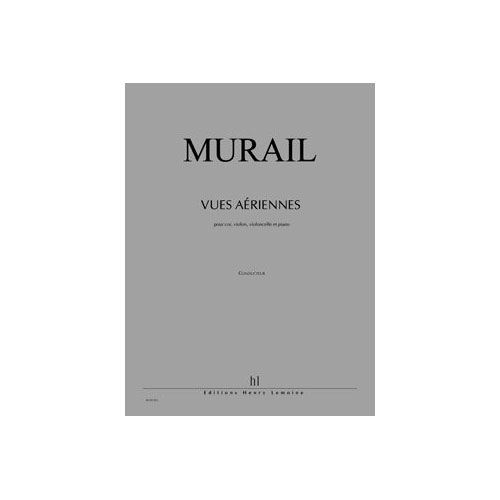Levering met DPD 
Betaling met iDeal 
Advies : +31 851 073 409
 nl
nl 
The piece is therefore divided into four "aspects," or four moments, which could be described as
- morning light (clear light, very obtuse angles, maximum distortion),
- rain light (blur effects, more closed angles, lighter distortion),
- noon light (bright light, frontal viewpoint, no distortion),
- evening light (warm light, long shadows, strong distortion).
Each of the four parts itself breaks down into three phases
- waiting phase (increasing tension),
- central object,
- fall (release of tension).
What can be compared to the structure of a musical sound: attack, sustain, decay. These phases are each of unequal length, just as the shadow of an object shortens and lengthens with the hours of the day (long wait for the morning light, long fall for the evening light).
The horn has a particular role: it only really intervenes in the central phases of each section. It will be heard mostly, in its full strength, as a soloist, in the third section (noon light) – before, it will be veiled by the mute, after, it will mostly play stopped notes.
Tristan Murail
Recording:
1 Accord CD,
Allegories - Aerial Views - Territories of Oblivion
Ensemble Fa, Dominique My (piano and direction)
Author: MURAIL Tristan
Discipline/Instrument: horn, violin, cello, and piano
Medium: Score
Style/Genre: contemporary
Release date: Jul.-88
